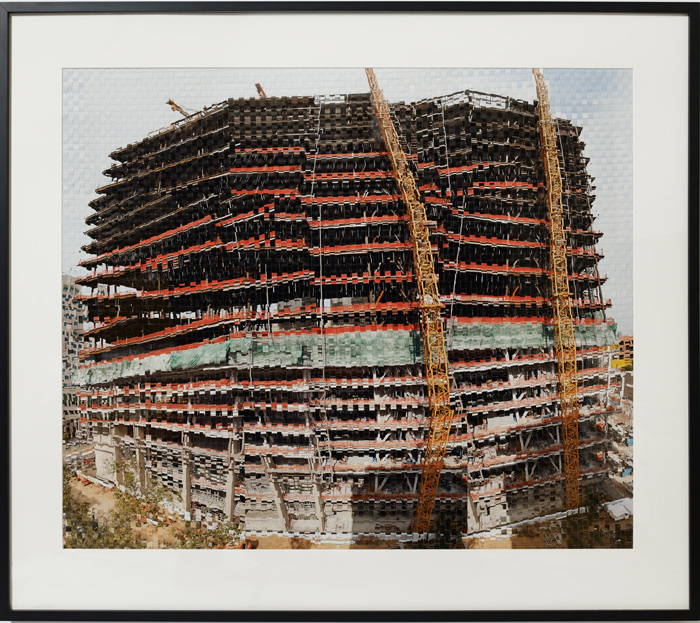Julie V. Garner
 26″x23″; woven archival photographs; 2010 Julie V. Garner STATEMENT My main body of work is a series of woven photographic tapestries depicting the built environment, primarily urban and industrial. I’m drawn to historical structures that demonstrate the hand of humans and the passage of time. The presence of people is implied, but rarely shown, as I prefer to allow the structures to speak for themselves. Each weaving begins as a collage. But instead of pasting images adjacent to each other, I cut them into 3/8” strips and weave them together. This allows me to create an abstracted and kinetic interpretation of the place. I take pictures from a variety of angles and use the distortions in perspective to create a sense of movement. Some elements are omitted and others are repeated. Each row of warp and weft includes numerous splices on the back side to combine the many photographs together. By incorporating multiple viewpoints I am attempting to recreate the journey our eyes take over a scene as we peruse it. I use controlled abstraction to confound the senses a little and slow down the process of seeing, hopefully creating a deeper experience for the viewer. BIO I am a self-taught artist rooted in collage, photography and mixed media. I’m currently based in Vallejo, California. My work has been shown extensively in the Bay Area and across the country with a solo show at the Bolinas Museum and several awards for the photographic tapestries. Although I studied art and weaving in college and worked as a seamstress to clothing designers, I was always interested in human movement and how our environment affects us psychologically. I studied Physical Therapy and became an Ergonomist. This took me into many work environments from factories to prisons to animation studios and corporate offices. I believe this experience greatly influenced my art as I found each place to have a character and mood about it that exerts itself on those who spend time within it. Much of my work involves abandoned structures, which, to me, represent a concentrated sense of character because they’re so imbued with history. I try to capture and interpret that character through the weavings. ARTIST CONTACT [click to email] IMAGES  32″x72″; woven archival photographs; 2010  44″x47″; woven archival photographs; 2012  28″x40″; woven archival photographs; 2020  22″x60″; woven archival photographs; 2015 |
